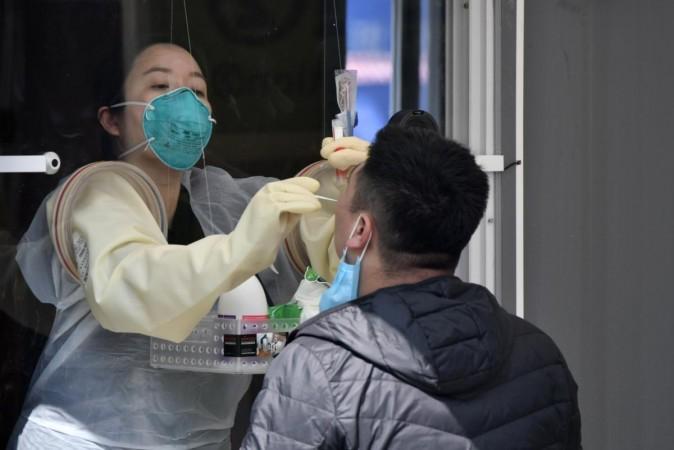Maintaining social distancing – at least six feet distance from people in public spaces has been recommended to be the best method of prevention of the contraction of COVID-19, the virus that caused the pandemic. However, a recent South Korean study has raised questions, after it showed indoor transmission of COVID-19 took place in just five minutes, and with 20 feet distance among the carrier, and the newly infected person.

It all began in June, when Dr Lee Ju-hyung, an epidemiologist, recreated the conditions at a restaurant in Jeonju, a city in southwestern South Korea, where people dining indoors contracted the novel coronavirus from a visitor from out of town. Among the people who were infected with the virus, was a high school student, who got the disease after exposure of just five minutes, from more than 20 feet away.
Recommended standard of 6 feet social distance may not be enough
The study was conducted by Lee and other epidemiologists. They also took the help of an engineer who specializes in aerodynamics. The results of the study were published last week, in the Journal of Korean Medical Science. The findings of the study questioned the widely accepted standard of six feet distance that needs to be maintained to stop the spread of COVID-19.
The findings also add more value to the growing evidence of airborne transmission of the novel coronavirus.

"In this outbreak, the distances between infector and infected persons were ... farther than the generally accepted 2 meters [6.6-foot] droplet transmission range," the study's authors wrote. "The guidelines on quarantine and epidemiological investigation must be updated to reflect these factors for control and prevention of COVID-19," reported Los Angeles Times.
Our knowledge about COVID-19's indoor transmission
In July 2020, the WHO had acknowledged the possibility of airborne transmission of COVID-19. More than 200 researchers from all over the world, had said that there is undeniable evidence that viruses released during sneezing and coughing can remain afloat in the air, and also cause infection.
The US Centres for Disease Control and Prevention (CDC) had also acknowledged the possibility of airborne transmission of the novel coronavirus in October, this year.

Apart from the study at hand, it has been found by various other studies as well, that the novel coronavirus can be airborne, and cause infection. A study, published in JAMA Internal Medicine, also showed that 6 feet (2 meters) of distance may not be enough to prevent you from contracting coronavirus infection, especially in poorly ventilated spaces. The study found that a COVID-19 positive person infected at least 23 persons who rode a bus with him to a religious event in less than two hours, in Zhejiang province, China.
A video shot by American scientists also showed that sneeze and cough droplets can travel further than previously thought, raising concerns on the current social distancing norms being followed by people around the world.
The risk associated
In light of the recent findings of the South Korean study, the casualness with which things are returning back to normal in India, from mass protests, clubs, marriage functions and all other indoor activities, may turn out to be a risky affair.
The issue is pertinent and debatable. Despite a cap of 50 to 100 guests at weddings, there aren't many who still follow the guidelines. Almost every other day there's some wedding happening, and quite often there are news reports of guests having turned corona positive after being part of a marriage party. At times, no one wears a mask and everyone seemed to have forgotten about social distancing; it just remains to be all about enjoying food and dance.

It's high time, people actually consider the danger of this pandemic, with no medical cure as such. Yes, you may bet on the availability of vaccination but not even health experts and researchers are sure about the possible side-effects of them. Venturing less outside home, keeping sanitation on the priority of checklist, and being less in contact with people are some the measures you can execute to keep the infection at bay.
With a single-day rise of 31,521 infections, the total number of cases in India stood at 97,67,371 on Thursday. As many as 412 fatalities pushed the toll to 1,41,772. At present, the total number of active cases is 3,72,293 while 92,53,306 people have recovered so far.














